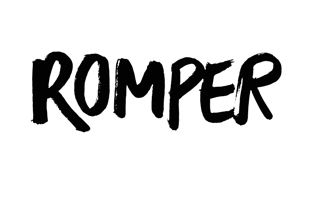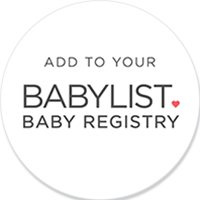5 Reasons Why Baby Is Having Trouble Latching On
Reading time: 3 minutes

The hardest part of nursing for most moms is achieving a successful latch. Not only is there anxiety about whether you’re “doing it correctly” but you also wonder if your child is getting enough milk.
Positioning, scheduling, and soothing a fussy baby can be overwhelming but everything falls into place once you find your groove and begin to nurse confidently and comfortably.
Always remember that babies are born to be breastfed and while it may seem like your little one is being difficult, just remember he’s trying to learn too. Try not to stress yourself out too much, here are five reasons that mother’s struggle to achieve a successful latch and suggestions on how to resolve them.
1. Engorgement
Sometimes a baby who latched on well in the hospital may experience difficulty when they get home. One of the reasons is many new moms experience engorgement; when your breasts are swollen and extremely firm, it can be difficult for your baby to adequately latch onto your nipple and areola. Applying a warm compress or taking a warm shower can soothe discomfort and soften your breasts enough for hand expression or so your baby can latch on. Moving forward, frequently feed or pump to avoid engorgement.
2. Get comfortable
You’ll increase your chance of breastfeeding success by sitting in comfortable positions that create close contact between you and your child. When a mother’s body is tense, stress hormones may be released that inhibit milk-flow. Similarly, when baby doesn’t feel secure s/he may lose interest in nursing altogether. If you struggle to nurse in comfort, consider: 1) A reclined position so gravity brings baby into your breast for a deep latch 2) Using pillows or blankets to support your baby during feeding 3) Products like LatchPal that can eliminate uncomfortable chin-cinching and other distractions.
3. Watch for hunger cues
Watch for hunger cues such as snuggling, mouth movements, and rooting. Your ability to recognize early hunger cues and nurse on demand can eliminate tears and frustration that result when a baby is extremely hungry and unable to latch quickly. Look for signals when you’re little one is sleeping or awake. While sleepy babies may be regarded as “good” babies, their sleepiness may prevent them from nursing as often as they should. Avoid structured feeding schedules and bring baby to your breast whenever s/he shows hunger cues.
4. You’ve confused your baby
If you’ve offered a bottle before breastfeeding was established, your baby may be experiencing nipple confusion. What moms don’t know is that nipple confusion is often a “milk-flow” preference. Drinking from a bottle resembles the let-down phase of nursing, but with less work. If a bottle can’t be avoided, introduce paced bottle feeding to make bottle feeding more like breastfeeding, this might help you transition your child back to your breast.
5. Know what a good latch looks like
A proper latch is deeper than most moms expect. Your baby should have a wide jaw and lots of your breast in your mouth. If you feel a tugging or pulling sensation, your baby has latched well. Make sure he is swallowing regularly. There should be an occasional “aah” sound, which is an exhale after swallowing. If your child is simply unable to latch, don’t get discouraged. Your child may be physically unable to do so, due to a lip or tongue tie. Call your doctor, midwife, or pediatrician and they can help you find a lactation consultant, breastfeeding clinic, or La Leche League leader.
 Written by Melissa LaHann, Founder and CEO of Happy Fig, LLC
Written by Melissa LaHann, Founder and CEO of Happy Fig, LLC
Like many moms before her, Melissa cradled her hungry, crying baby as she clumsily adjusted her bra and sat uncomfortably holding up her shirt. Before she knew it, her baby was squirming, her shirt was falling, and the nursing session was interrupted. She needed a better solution, so she created LatchPal, the first nursing clip of its kind.
LatchPal is a breastfeeding shirt clip that holds up a mother’s shirt during breastfeeding. It eliminates shirt re-positioning and feeding disruptions, and helps a mom nurse hands-free in comfort to maximize milk flow. LatchPal was designed with moms in mind. The multi-use solution only requires one hand to latch. It’s a must-have breastfeeding accessory and essential for post-partum moms, pumping moms, and nursing in public.
Interested in writing a guest blog for LatchPal? Send your topic idea to pr@latchpal.com.
All data and information provided on this site is for informational purposes only. LatchPal makes no representations as to accuracy, completeness, current-ness, suitability, or validity of any information on this site and will not be liable for any errors, omissions, or delays in this information or any losses, injuries, or damages arising from its display or use. All information is provided on an as-is basis.
























